#hanfu hairstyle
Photo
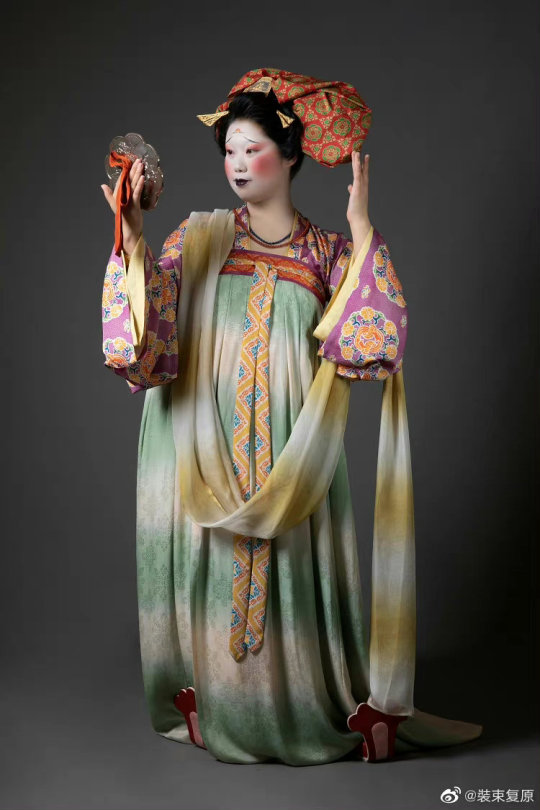

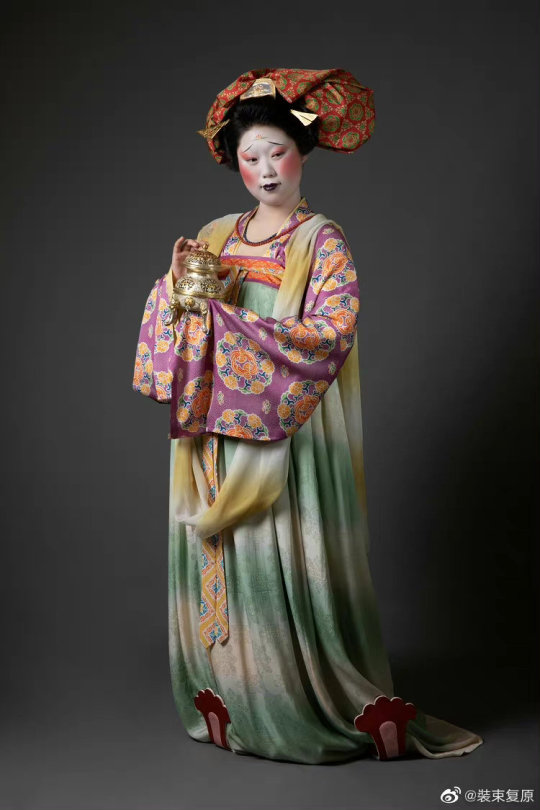


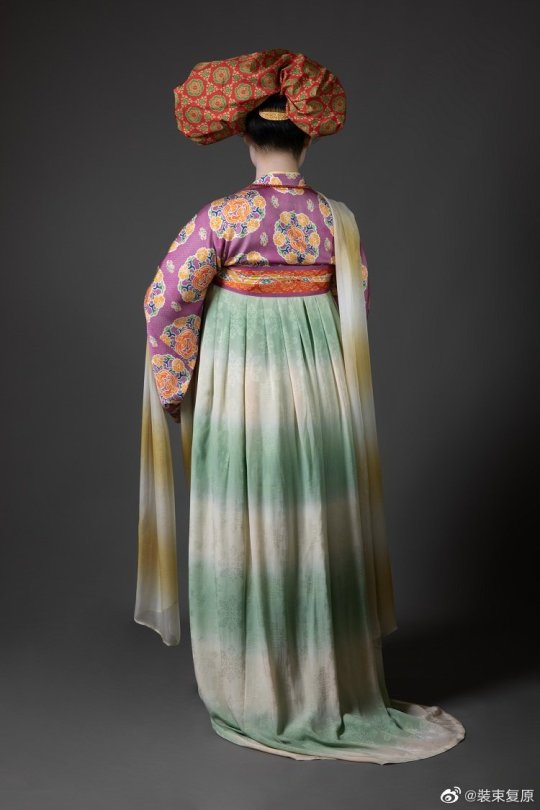
【Reference Tang Dynasty Artifacts】:
・Nao Sao Hairstyle (闹扫髻) Female Figurine, Collection of Wuhan Museum



・Tang Dynasty Female Figurine with Nao Sao Hairstyle (闹扫髻)
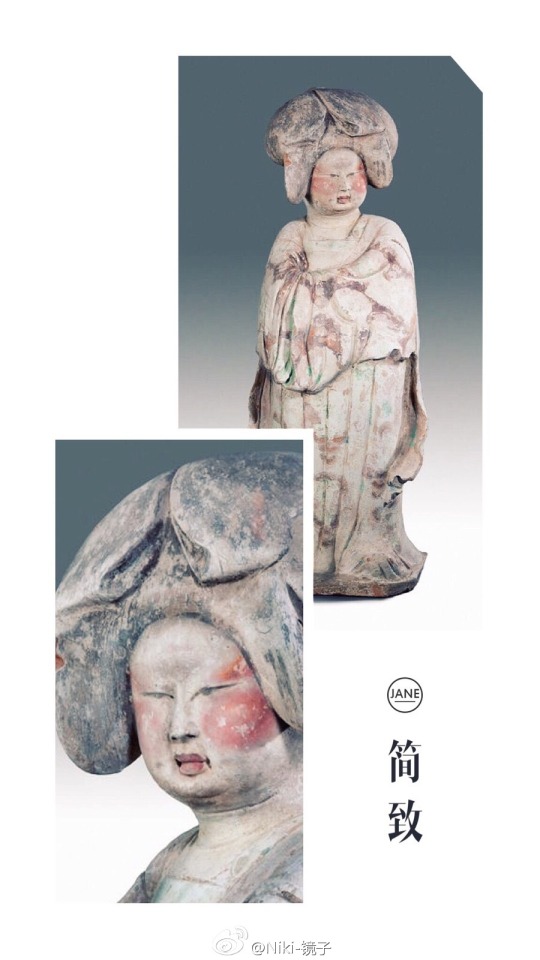
[Hanfu · 漢服]Chinese Tang Dynasty Traditional Clothing Hanfu & Hairstyle Based On Female Figurine-【Late Tang Period】
Women's Clothing, Hairstyle and Makeup in the Late Tang Dynasty
—————-
【History Note】
In the late Tang Dynasty, women's daily attire was still dominated by a combination of shirts (Shan/衫), skirts (Qun/裙), and Pibo (披帛), but compared with the mid-Tang Period, which advocated the sharp silhouette of the upper small and the lower large, the late Tang Period was more fashionable to create a rounded and loose silhouette.
At the same time, the exaggerated and peculiar style in the middle Tang Dynasty is still prosperous. In terms of hairstyle, all kinds of asymmetrical hairstyle are popular, and it is fashionable to wrap the hair bun with various precious fabrics, which has both practical functions and decorative features. “五陵年少争缠头,一曲红绡不知数“”(From the narrative poem "Pipa Xing /琵琶行 “by Bai Juyi in the Tang Dynasty)” is Refers to such attire.
“五陵年少争缠头,一曲红绡不知数”
It refers to "The wealthy children of the capital are scrambling to give me rewards, and every time a song (play pipa) is played, I will got countless beautiful brocades (红绡)
About the makeup, as Tang Dynasty poet Bai Juyi, described in his poem "Shishi Zhuang/时世妆" :”乌膏注唇唇似泥,双眉画作八字低”
The black cream is applied to the lips and lips are like mud, and the eyebrows are painted with low “八 (chinese character "eight")”shape.
This is a popular makeup look in the mid-Tang Period and it continued to the late Tang.
————————
Recreation Work:@裝束复原
🔗Weibo:https://weibo.com/1656910125/MasyqfRSy
————————
#chinese hanfu#Tang Dynasty#late tang dynasty#Nao Sao Hairstyle#hanfu#hanfu hairstyle#hanfu_challenge#Chinese Costume#chinese traditional clothing#Tang Dynasty Artifacts#chinese historical fashion#chinese history#hanfu history#Nao Sao Hairstyle (闹扫髻) Female Figurine#Pipa Xing /琵琶行#Shishi Zhuang/时世妆#ruqun#shanzi#pibo#Chinese Aesthetics#historical fashion#漢服#汉服#裝束复原
573 notes
·
View notes
Text
Since I’ve posted my face on here b4 I might as well share my very recent cosplay venture here as well —
Hanfu Ningguang 💛🦋
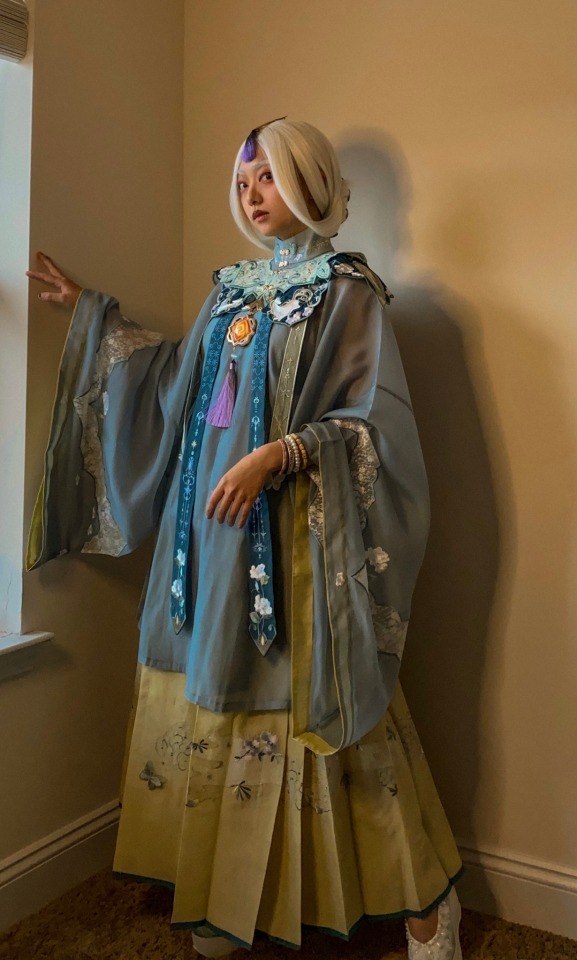
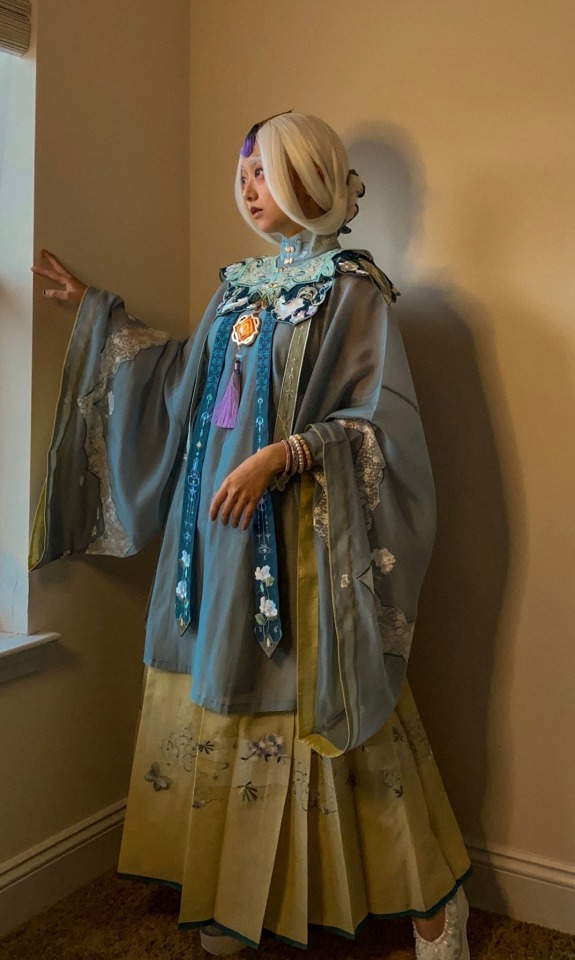
Happy year of the rabbit everyone ! 🐇
#genshin impact#Genshin impact cosplay#ningguang#ningguang genshin impact#ningguang cosplay#hanfu#hanfu cosplay#hanfu hairstyle#cloud collar#hoyoverse#lantern rite#cosplay#汉服#凝光#原神#海灯节#ningguang gi
165 notes
·
View notes
Text
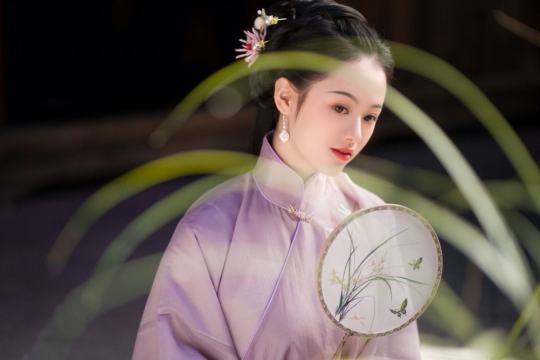





Ming Dynasty Hanfu Styling
Works from Hanfu photographer Dong Kai (東凯)
107 notes
·
View notes
Text

Inktober 24 Fairy
#inktober#inktober 2022#inktober fairy#original character#chinese#chinese dress#chinese hanfu#Hanfu#hanfu hairstyle#Chinese fairy#Jasmine#xianxia
49 notes
·
View notes
Text
A transformation
#douyin#hanfu#clothing#hot take but you really need a wider/rounder face to pull off this type of eleborate hairstyle#all these cdramas where you've got these actresses with really small faces just don't work#at least with some older dramas they would have the actress put on some weight if needed#nowadays directors are cowards and just get the skinniest actress they can find#come on
782 notes
·
View notes
Note
This is for East Asian hairstyles in general but idk where else to ask this(and this does include traditional Chinese fashion): How much of women’s (or men’s though I would guess mostly women) hairstyles was composed of wigs? Feel free to just answer this in relation to Chinese hairstyles specifically if answering for any others deviates too much from the blog purpose.
Hi! Thanks for the question, and sorry for taking ages to reply!

Historically, it was quite common for Chinese women to use wigs to create their hairstyles, as many historical hairstyles were not meant to be done with real hair -- although I don't know the specific percentage of women who did so. Wigs became prevalent in China starting from the Spring and Autumn period (771-476 BC) when they were popularized by upper-class women, and were widely used by women until the 20th century, when hairstyles became simpler. Wigs could be made from real human or animal hair, other fibers, paper, or wood.
The following posts/links discuss wigs in Chinese history in more detail, please check them out!:
Historical wigs (with images of artifacts) by @fouryearsofshades
My post addressing the use of fake hair in historical Chinese hairstyles with more info/images by @fate-magical-girls
Specific wigs during the Southern dynasties and Ming dynasty by @chinesehanfu
The history of wigs in China by New Hanfu
The history of Chinese hairpieces by Five Thousand Years
Chinese traditional hairstyles & hairpieces by National Clothing
As for men, they typically put their hair into a bun and encased it in some kind of covering (cloth, hat, cap, headdress), so there was no need for them to use wigs. However, as I explained in this post, some men would insert a wig/towel/other material inside their hat/cap to give it more structure.
To this day, wigs/hairpieces/extensions are necessary and commonly used in creating traditional Chinese hairstyles.
For more information and references, please see my wigs tag for all posts related to wigs and hairpieces.
If anyone has more info on this topic, please share! ^^
Hope this helps! (image via)
#hairstyles#wigs#fake hair#mens hairstyles#hanfu#history#ask#reply#reference#>100#m#chinese fashion#chinese culture#china
126 notes
·
View notes
Text
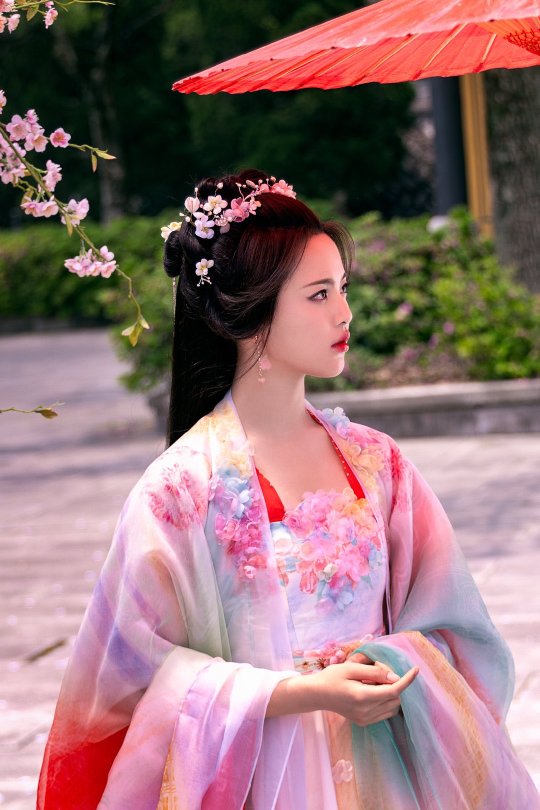

Fairy Xiang Yun (Love you seven times; 2023)
#love you seven times#cdrama#chinese fashion#hanfu#xiang yun#fairy#yang chaoyue#chinese clothes#chinese costumes#asian fashion#wuxia drama#fairy fashion#fairy dress#hairstyle#hair pin#asian clothes#asian costumes#chinese costume
175 notes
·
View notes
Text
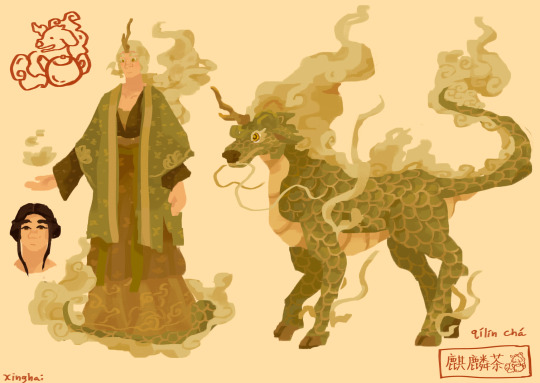
Finally finished Juhua’s reference!
#qilin#Juhua#chrysanthemum#hanfu#tried to make their clothing and human hairstyle based on tang dynasty hanfu and outfits#big credit to ziseviolet for their. any wonderful references on hanfu#their many**#artists on tumblr#ocs#original character
69 notes
·
View notes
Text

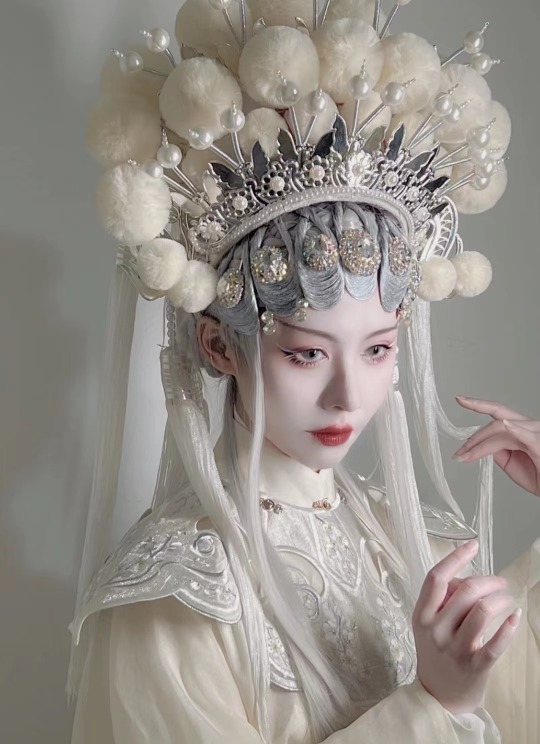
Opera
#hanfu#chinese costume#hanfu model#hanfu makeup#fashion makeup#chinese costumes#asian costumes#chinese clothes#asian fashion#chinese fashion#chinese hanfu#asian clothes#photoshoot#aesthetic#beautiful#hairstyle#hairporn#china#fashion#tang#art#photography#chinese#Hanfu#hanfu fashion#hanfu art#hanfu challenge#chineseart#chinesecostume#chineseculture
469 notes
·
View notes
Photo

中国🇨🇳古装剧《卿卿日常》由刘闻洋监制,赵启辰执导,白敬亭、田曦薇、陈小纭、刘冠麟领衔主演,刘令姿特别主演,张晓晨、昌隆、刘美含、范帅琦、刘萌萌、魏子昕、陈紫函、胡可等主演。 The Drama aired on iQiyi on Nov 10, 2022 Chinese Drama: 卿卿日常NEW LIFE BEGINS(2022) Chinese Actors 🍃👇 Jingting Bai as Yin Zheng(尹峥) Xiwei Tian as Wei Li(李薇) Xiaoyun Chen as Hao Xia(郝葭) Liu Guanlin as Yin An(尹岸) #中国风 #傳統文化 #Chinesestyle #Chinesehistory #Hanfu #Cdrama #history #beauty #traditionalculture #Chineseculture #hairstyle #goodvibes #Chinesedrama #culture #dress #hánphục #asian #photography #ancientchina #中華風 #演員 #هانفو #ฮั่นฝู #ชุดฮั่นฝู #卿卿日常 #田曦薇 #白敬亭 #NEWLIFEBEGINS #중국 #劇照 https://www.instagram.com/p/ClJmjKAv4L_/?igshid=NGJjMDIxMWI=
#中国风#傳統文化#chinesestyle#chinesehistory#hanfu#cdrama#history#beauty#traditionalculture#chineseculture#hairstyle#goodvibes#chinesedrama#culture#dress#hánphục#asian#photography#ancientchina#中華風#演員#هانفو#ฮั่นฝู#ชุดฮั่นฝู#卿卿日常#田曦薇#白敬亭#newlifebegins#중국#劇照
26 notes
·
View notes
Text
[Hanfu · 漢服]Chinese Tang Dynasty(618-907A.D) Traditional Clothing Hanfu & Hairstyle reference to Terracotta statuette of China’s Tang Dynasty Court Lady with hair bun【盛唐·仕女】





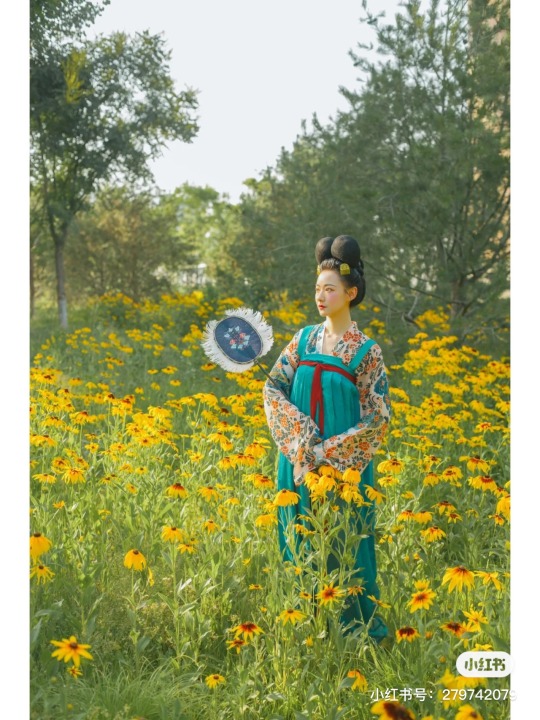


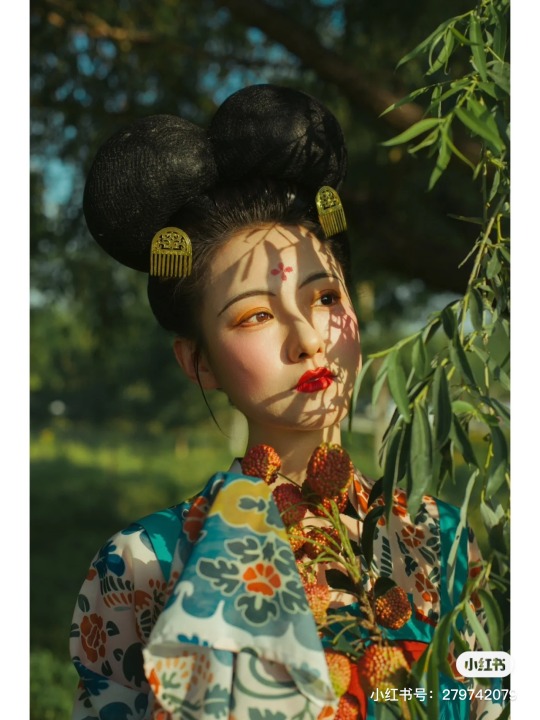
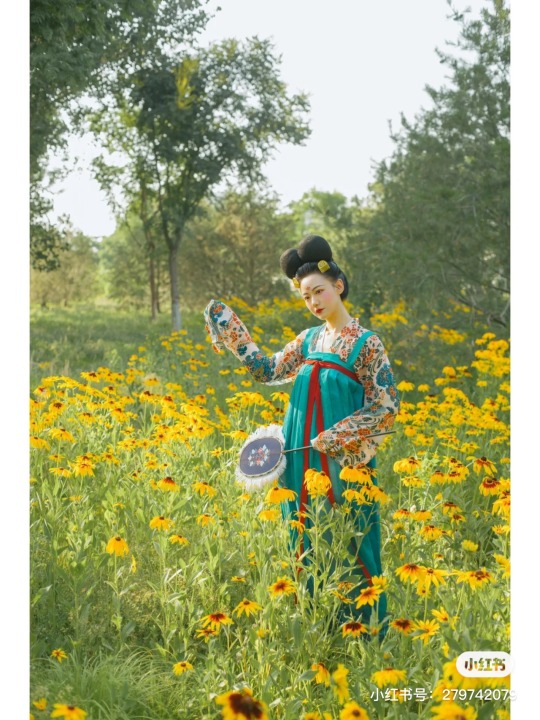

【Historical Reference Artifacts】:
Terracotta statuette of a China’s Tang Dynasty Court Lady with hair bun (7th-10th Century)
Musée Guimet, France
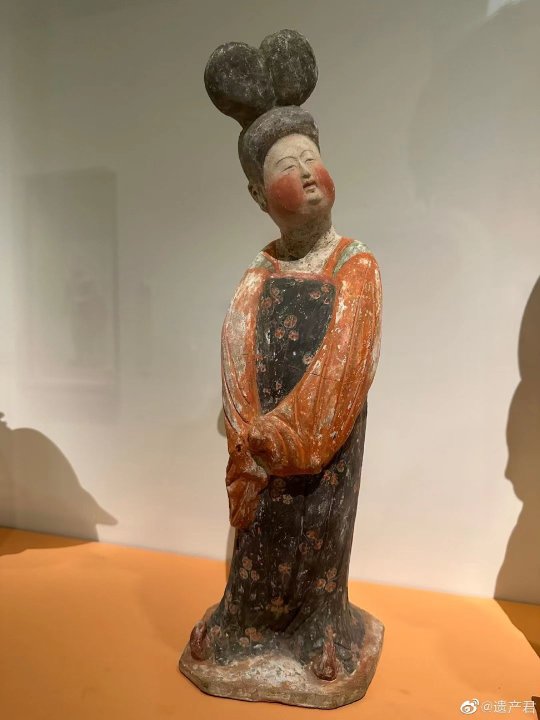
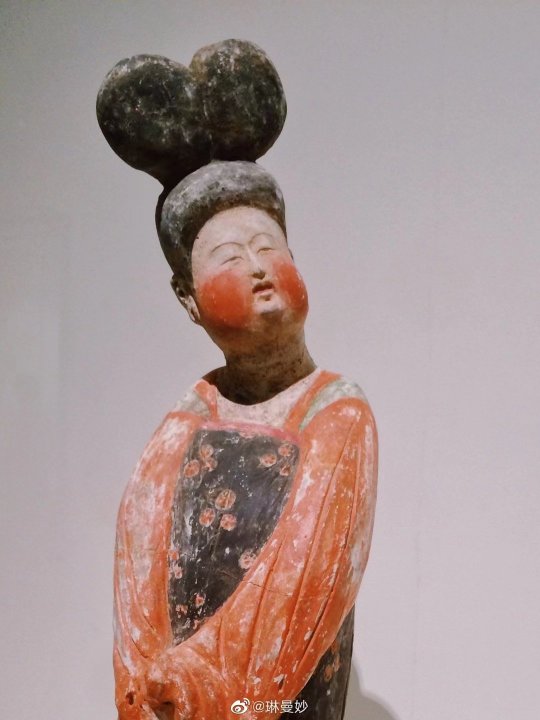
_______
📝 Plan: @柿子菌stargazer
📸Photo: @摄影师梁咩咩
💻Post-production:@张小花
🧚🏻 Model & 💄Stylist:@张小花
👗Hanfu:@尘余馆
🔗Weibo:https://weibo.com/1812652835/N5AsTc9Xw
🔗Xiaohongshu App:http://xhslink.com/BhHYpr
_______
#Tang Dynasty(618-907A.D)#chinese hanfu#hanfu#hanfu accessories#chinese traditional clothing#chinese#china#hanfu_challenge#hanfu history#hanfu hairstyle#historical clothing#chinese history#historical fashion#漢服#汉服#china fashion#Court Lady with hair bun#历史重演造型
133 notes
·
View notes
Text

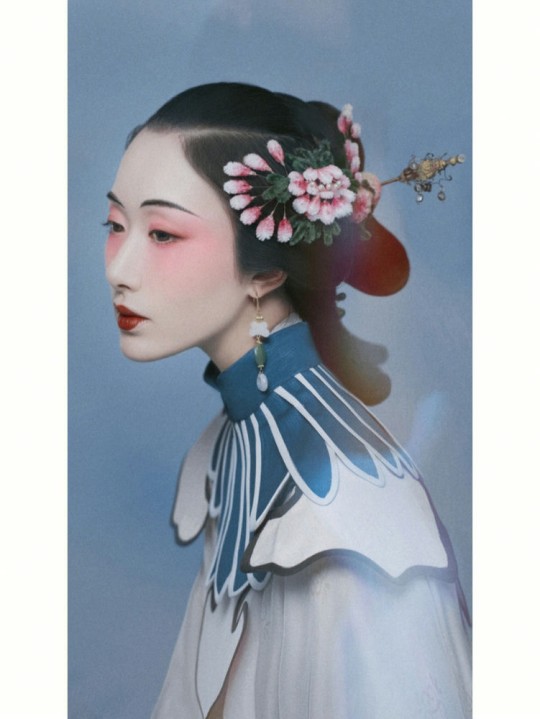
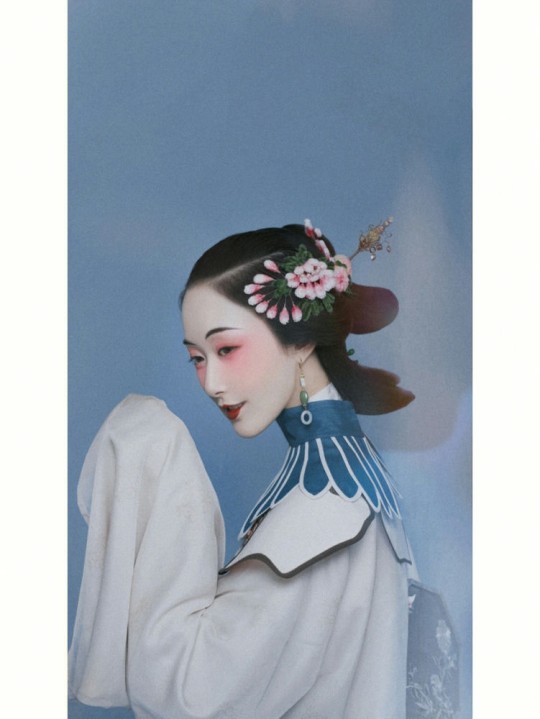

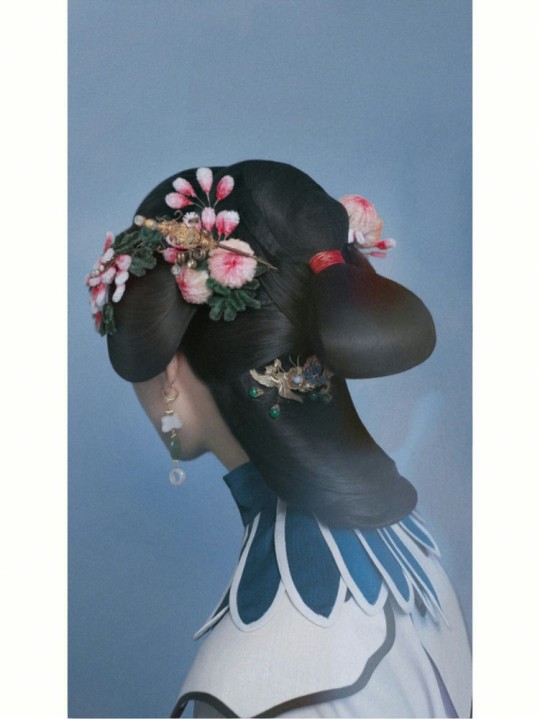
Elegant Hanfu look
From Hanfu model: 邹zououu
323 notes
·
View notes
Text

my only one
my KINGDOM COME undone
my broken drum
you have beaten my heart
don’t want no other SHADE OF BLUE but you
no other sadness in the world would do.
it's my first time drawing him... *slaps a bumper sticker on my art saying 1-800-HOWS-MY-SCARA*
brought to you by "arms are hot", "I'm a simp", and "I thought I was gonna fuck up his hair but it turned out kinda ok"
**please don't tag my art as me/kin/etc., thank you!**
#Genshin#Genshin Impact#Scaramouche#Wanderer#my art#LOOK AT HIM HE'S SO PRETTY#I almost drew him with long hair pinned up with hanfu but I resisted#figured I should draw his canon hairstyle first since I'd never drawn him before XD#my GOD I'm a fucking simp-
7 notes
·
View notes
Text
There is a person on IG that looks to be of East Asian descent who is a hobbyist model. They have recently taken to wearing hanfu in at least 3 photoshoots I have seen to date.
All of the hairstyles are Wrong. It may look kind of right or okay at first glance, but when you look a bit closer they just seem just a little bit off. I do not know how to explain this Exactly Precisely except for pointing out that in varying cases, it is a) too wide; b) not enough accessories in the appropriate places (you do not make a big hairstyle with a lot of empty spaces normally unless it is to put accessories in. In dynastic eras the more elaborate the hairstyle the more pins you have in it. This is because the pins hold the style and the various bits that go into that style in place. So a great big empty space is Unrealistic because it looks like Something Is Missing, unless it is a simple enough hairstyle that it can feasibly be held up with minimal pins.), for instance having pins in the front but no adornments in the back; c) in the latest post I just saw, the front sections of their hair are just Down while there are braids to the back of it. This Does Not Happen. At most you are allowed some strands of hair escaping at the front, you Cannot have whole front sections of your hair on each side down. Or else they are Too Tall and just Straight Up. Unrealistically so. It is just Wrong.
I have never seen such Wrong hairstyles in hanfu before. It Bothers me so much. Even just leaving their hair down would be better.
I realise after I have written this that it is just sad and kind of upsetting to see when people (diaspora) are trying to reconnect with their heritage and are either misinformed or miss the mark in terms of 'Actually, That's... Not It' somehow. It also annoys me because this can go on to misinform other people not from our culture as to what something is or looks like.
Like I understand that diasporic Chinese food for instance is its own thing, but like - I saw a post somewhere where a Chinese diaspora person had written in a novel all poetically about the way a particular Chinese character supposedly came to be written as it is (told, of course, to them by a 'Master Wang') - they said the word 黑 ('black', pronounced hēi) is made up of a mouth (口) bifurcated by and on top of earth/ground (土) being heated over fire (火), even going so far as to make metaphors about it.
This is completely incorrect. It's actually a field (田) on top of the earth (土) and fire below (火). It cannot be a mouth (口) because it does not account for the two dots/点 in the 'mouth' at the very top of the word 黑. Just Googling it on Wiktionary will show you this.
But it's... published in an English-language book now, this. And I came across it because some other Chinese diaspora person had shared this page, commenting that this author 'writes so evocatively of characters that it gives them such feeling' or something to that effect. When it is flat out Wrong.
It's just in the same vein of things as like - once a Chinese diasporic friend said they were looking at buying some hanfu and wanted my opinions on which, and proceeded to show me something on Etsy that, at a glance, was immediately clear to me that it wasn't hanfu; it was more Japanese (the belt/sash was wrong, it was too wide and fastened differently iirc, something like that). Or like when I and my dad wore hanfu for Chinese New Year back home in Sg, and my uncle and several other people commented like, 'Wah, wearing kimono ah/why wearing Japanese stuff?'
Like... I understand that reconnecting with heritage is a tricky thing, especially when you don't have a lot of background, which is kind of the whole thing, in many cases; and that it is a very personal thing and that in some cases as diaspora it is completely about transforming or making something new of it. But at the same time, some things really are 'right' or 'wrong', in the sense that some things do fall within a 'Yes this is how it looks like/is done' and 'Oh that's not quite how it is' circle. Like it just wouldn't be true to say that, oh, idk, Chinese people believe that the Jade Emperor is the One God. The Jade Emperor is one of the immortals we have in our lore/believe in! But it's not true that we think there's only The One God. Or something like - God forbid, wearing the collar crossed right over left (only done at funerals after the person is Dead).
You are free to break the rules - but only if you know them well enough first to know what the rules Are.
#sigh.#not to be Gatekeepy but like. genuinely. sometimes things really are just. Wrong.#like pls go and look stuff up u kno watch a chinese-made piece of media see how things are depicted that kinda thing familiarise yourself#there is so much info available in english#there are tutorials on YouTube for stuff like hanfu hairstyles even simple ones for under 5min#stylistic choices are one thing & like just Doing Something Because are two different things#personal#like i just mean - if you wanna do a hanfu hairstyle there are SO MANY refs#go back to looking at chinese paintings or wall art depictions even#but when you make something up on the spot with little to no understanding beyond some Impressions it shows
2 notes
·
View notes
Note
In wuxia I see that they have half their hair up and the other half down. Is there a certain period where this hairstyle directs from?
Hi, thanks for the question, and sorry for taking ages to reply!
The half-up, half-down hairstyle that you often see on both male & female characters in Chinese guzhuang (period costume) dramas is not based on historical hairstyles. Rather, it is a fairly recent styling convention, most likely originating from late 20th century wuxia TV shows from Hong Kong (x). Over time the hairstyle has become normalized and commonplace in Chinese costume dramas, especially in the wuxia and xianxia genres (because these genres are not necessarily aiming for historical accuracy in the first place).
Below, from left to right: Wang Hedi in Love Between Fairy and Devil, Deng Wei in Miss the Dragon, Xiao Zhan in The Untamed, Gong Jun in Word of Honor:

As @niteshade925 explains in this post, for male characters, the main idea of the hairstyle is to make the character look attractive, and also in some shows/context, to hint at the character’s personality, as in maybe they do not adhere to traditional customs and are free-spirited/spontaneous. For female characters, it is usually just a regular hairstyle without deeper meaning :P
For more information on this half-up half-down hairstyle, and historical hairstyles in general, please see the following posts:
The historical accuracy of half-up half-down hairstyles
The historical accuracy of ponytails
Historical hairstyles for men
Hope this helps!
#hairstyles#mens hairstyles#wuxia#xianxia#guzhuang#drama#hanfu#ask#reply#herbpot#chinese fashion#chinese clothing#china#>500
691 notes
·
View notes
Text
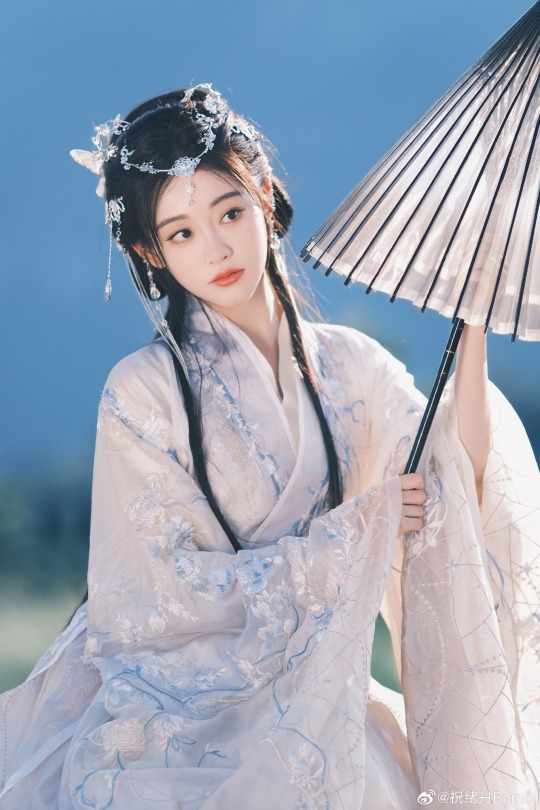


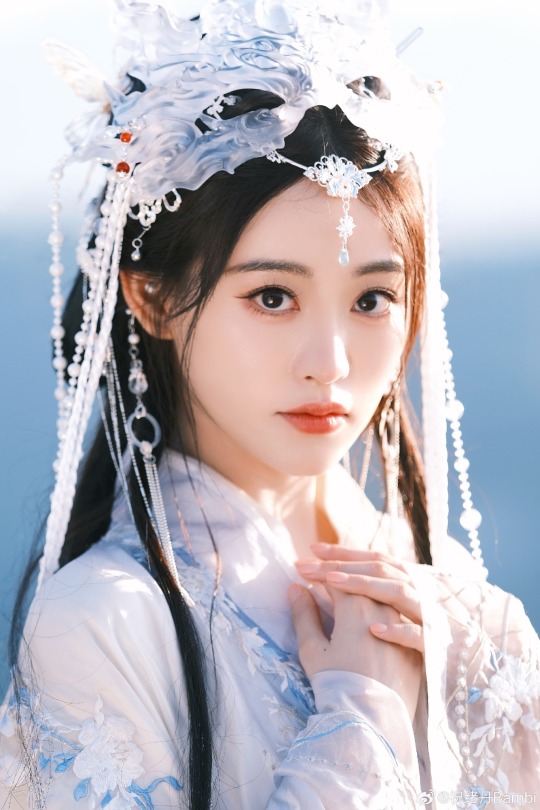
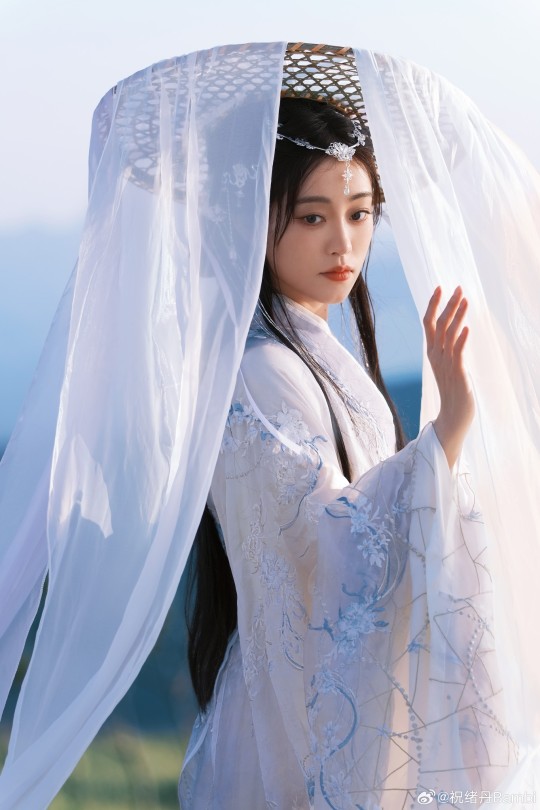
Zhu Xudan photoshoot
#zhu xudan#photoshoot#chinese fashion#chinese actress#asian fashion#chinese clothes#hanfu#asian clothes#hairstyle#hairporn#hair accessories
122 notes
·
View notes